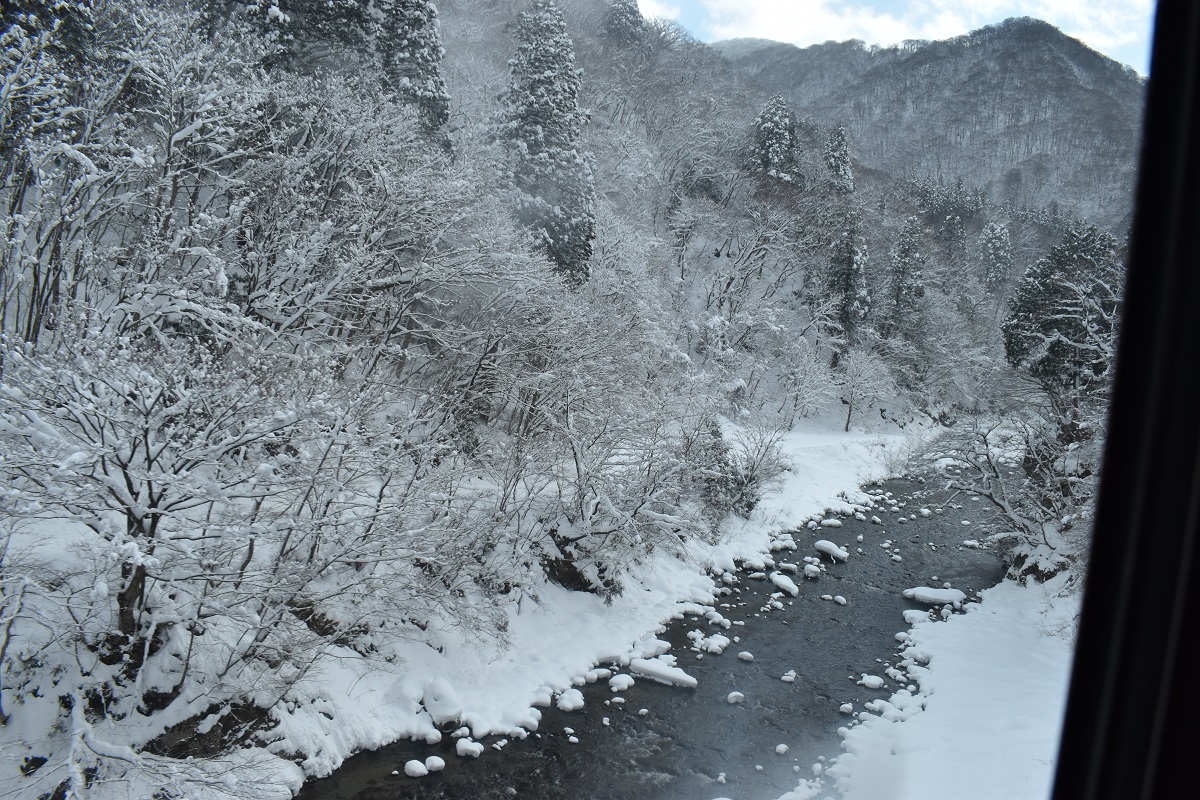Just 80 minutes from Tokyo on the Hokuriku Shinkansen, you will arrive at the snow-covered city of prayer. The exterior design of the Nagano Station building is an homage to the main hall of Zenkoji Temple. Daimon, entrance of Zenkoji, is about a 10 minute bus ride from bus stop number 1 in front of the station. The best time to visit is early in the morning when there are fewer worshipers on the approach, and this is when the shops on both sides of the approach open their shutters.
The pair of statues of A-un at the Niomon gate is powerful and reminds us of the statues made by Unkei at Todaiji Temple.

The Sanmon Gate finally comes into view in front of us, and it reminds us of the Sanmon Gate of Chion-in Temple in Kyoto, or the Sanmon Gate of Nanzen-ji Temple, where the great thief Goemon enjoyed a spectacular view from the top of the gate. When you climb up here, you can see Nagano city below and the surrounding mountains, but you can also feel that Zenkoji is located at the top of the alluvial fan.


The name of Zenkoji is written on the plaque on the temple gate. Normally people would be excited to find the five pigeons hidden inside the kanji, but I’m more curious about why the name of the temple is written on the plaque when the mountain name is usually written on it. Returning to the topic of looking for pigeons, it is difficult to find the last one, but the biggest hint is that its tail is visible. Just find it on site.

I also asked the security guard at the temple gate and was convinced that there was still a knowledge hidden in this plaque. At Zenkoji Temple, an Eko (memorial service) pillar is erected in front of the main hall once every six years in order to connect with Maedachi on behalf of the principal image, and touching this pillar is a major event. Speaking of Zenkoji Temple, there is a famous story called
“Visiting Zenkoji Temple being pulled by a Cow”
in which a woman who did not believe in Buddhism got her costume caught in the horns of a cow, and the woman chased after it to get it back and ends up visiting Zenkoji Temple. The cow was an incarnation of Buddha. The face of the cow and the Kanji character of a sheep, animal 6th year after a cow year in the Chinese zodiac, are hidden in this Zenkoji plaque.
Now, we finally enter the main hall, but since the attraction here is famous, where you search for the key to connect with the principal image in the dark, you can’t help but head towards the entrance of an altar tour first. Then, the monk who guides tourists inside the temple scolds them, saying, “What’s wrong with going into someone’s house and not greeting the Lord?” Then you notice that the principal image of the Buddha, which should be located directly in front of the center inside the main hall, is now to the left of the center. To the right of the center is a statue of the Lord of the house and his family. The monk explains that Zenkoji is not actually a temple, but Zenko-san’s private residence, and the Buddha is enshrined there. So, first of all, you have to say hello to the Lord.
By the way, I couldn’t get enough of being scolded, so I asked him about the secret Buddha statue, which even the head priest of Zenkoji Temple had never seen, how big it was and what it was made of, and he answered smoothly that it was 1 sun and 8 shaku (about 54cm) tall and made of gold. The story is about Mr. HONDA Yoshimitsu (Zenko), a local civil servant, who picked up a Buddhist statue that had been abandoned (due to the Mononobe clan’s anti-Buddhism movement during the Asuka period) in Namba (Osaka) while on a business trip. The story is that since people didn’t know about the existence of Buddha or the value of gold at that time, no one would have paid any attention to it even if it was thrown away. It makes sense, but I wonder if that’s true.
Afterwards, Minamoto no Yoritomo also visited Zenkoji Temple, and the secret Buddha statue was brought out by Takeda Shingen and returned by Toyotomi Hideyoshi. In any case, it was famous enough to be talked about at the time. By the way, when you look up at the ceiling, you can see the pattern of the chrysanthemum crest. The monk boasts that this is proof that the Imperial family donated the money.

Now it’s time to tour the altar. At the entrance, hold your luggage in your left hand and run along the wall with your right hand to touch the key that connects to the principal image above. It’s getting darker and darker, and I’m afraid to take a step forward. I don’t think anything will come out, but it’s scarier than a haunted house. I suddenly feel anxious and want to hold on to something or someone (=> Buddha) to guide me. This is the purpose of the altar tour. At first I thought that if someone lost something in the pitch darkness, the monk would look for it with a flashlight, but as the tour progressed, the darkness made me forget that.
Finally, go to the sutra. I’m amazed at the opportunism that by rotating the octagonal receptacle that holds the sutras by hands, you can get the same merit as reading all 7,000 volumes of sutras. I heard that the weight of the storage receptacle is 5 tons, of which 1.2 tons are sutras, but does the difference of 3.8 tons relate to merit?
Zenkoji Temple was full of knowledge !














